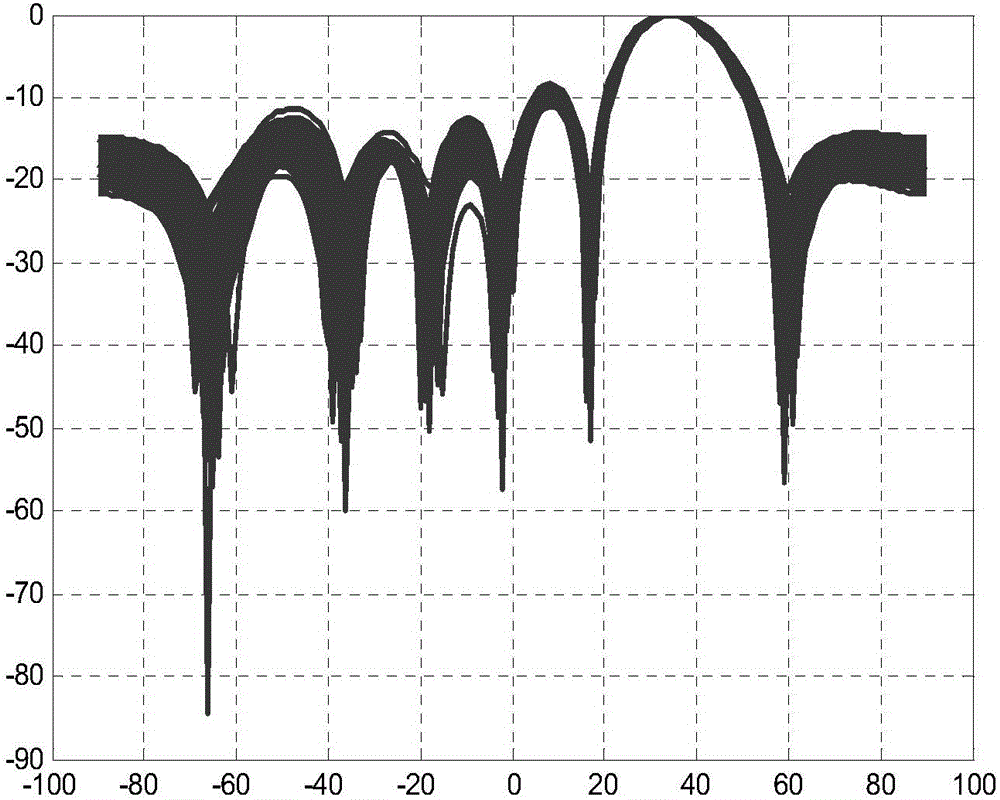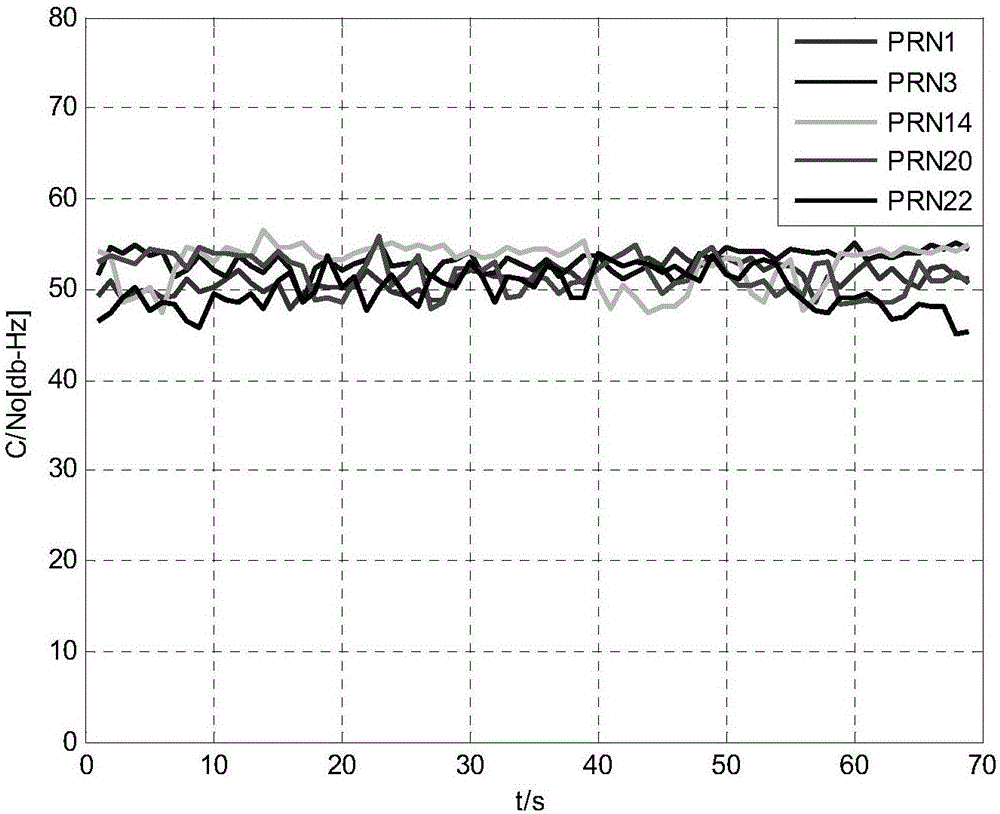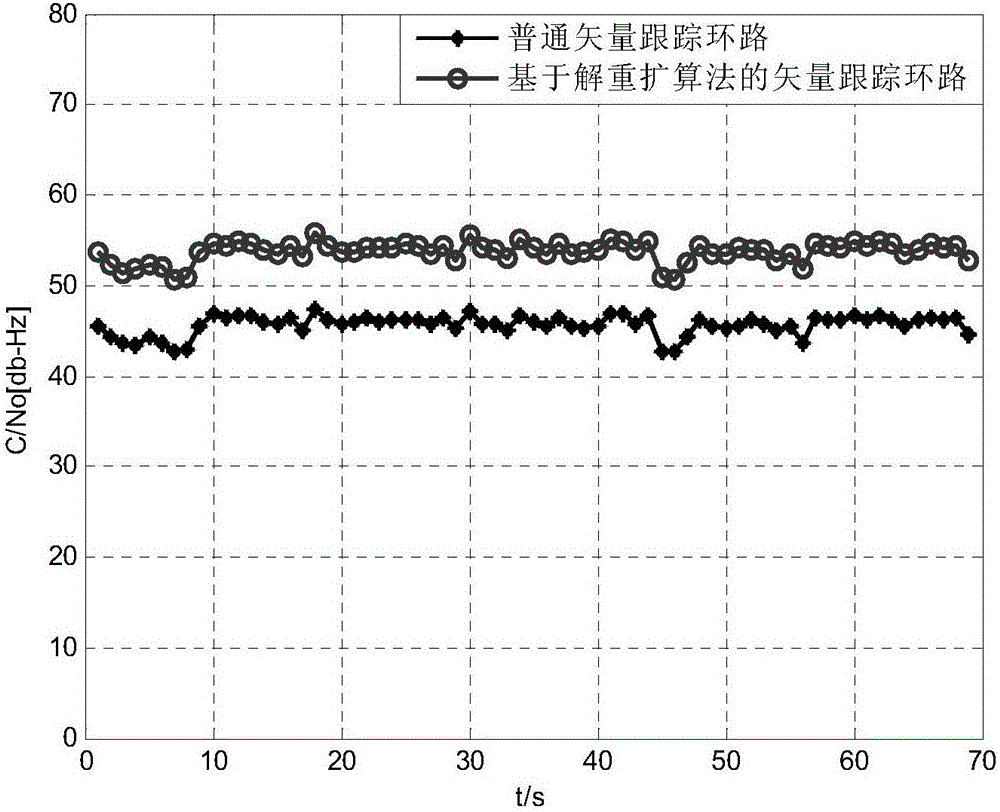GNSS vector receiver anti-interference method based on despread respread algorithm
A receiver and de-respreading technology, which is applied in the field of satellite navigation anti-jamming, can solve problems such as high complexity and performance degradation of vector tracking loops, and achieve good robustness
- Summary
- Abstract
- Description
- Claims
- Application Information
AI Technical Summary
Problems solved by technology
Method used
Image
Examples
Embodiment Construction
[0021] The anti-jamming method of the GNSS vector receiver based on the de-respreading algorithm provided by the present invention will be described in detail below with reference to the accompanying drawings and specific embodiments. For convenience, the following uses the GPS (Global Positioning System) system and an array antenna with M array elements as an example to illustrate. In fact, this method is applicable to any array antenna, and does not need to know the array manifold, and the array manifold error robustness.
[0022] The GNSS vector receiver anti-jamming method based on derespreading algorithm provided by the present invention comprises the following steps carried out in order:
[0023] 1) Project the digital intermediate frequency signal received by the array antenna to the interference orthogonal complement space to suppress the oppressive interference, and send the data after the interference suppression to the receiver, and the scalar tracking loop complete...
PUM
 Login to View More
Login to View More Abstract
Description
Claims
Application Information
 Login to View More
Login to View More - R&D
- Intellectual Property
- Life Sciences
- Materials
- Tech Scout
- Unparalleled Data Quality
- Higher Quality Content
- 60% Fewer Hallucinations
Browse by: Latest US Patents, China's latest patents, Technical Efficacy Thesaurus, Application Domain, Technology Topic, Popular Technical Reports.
© 2025 PatSnap. All rights reserved.Legal|Privacy policy|Modern Slavery Act Transparency Statement|Sitemap|About US| Contact US: help@patsnap.com



